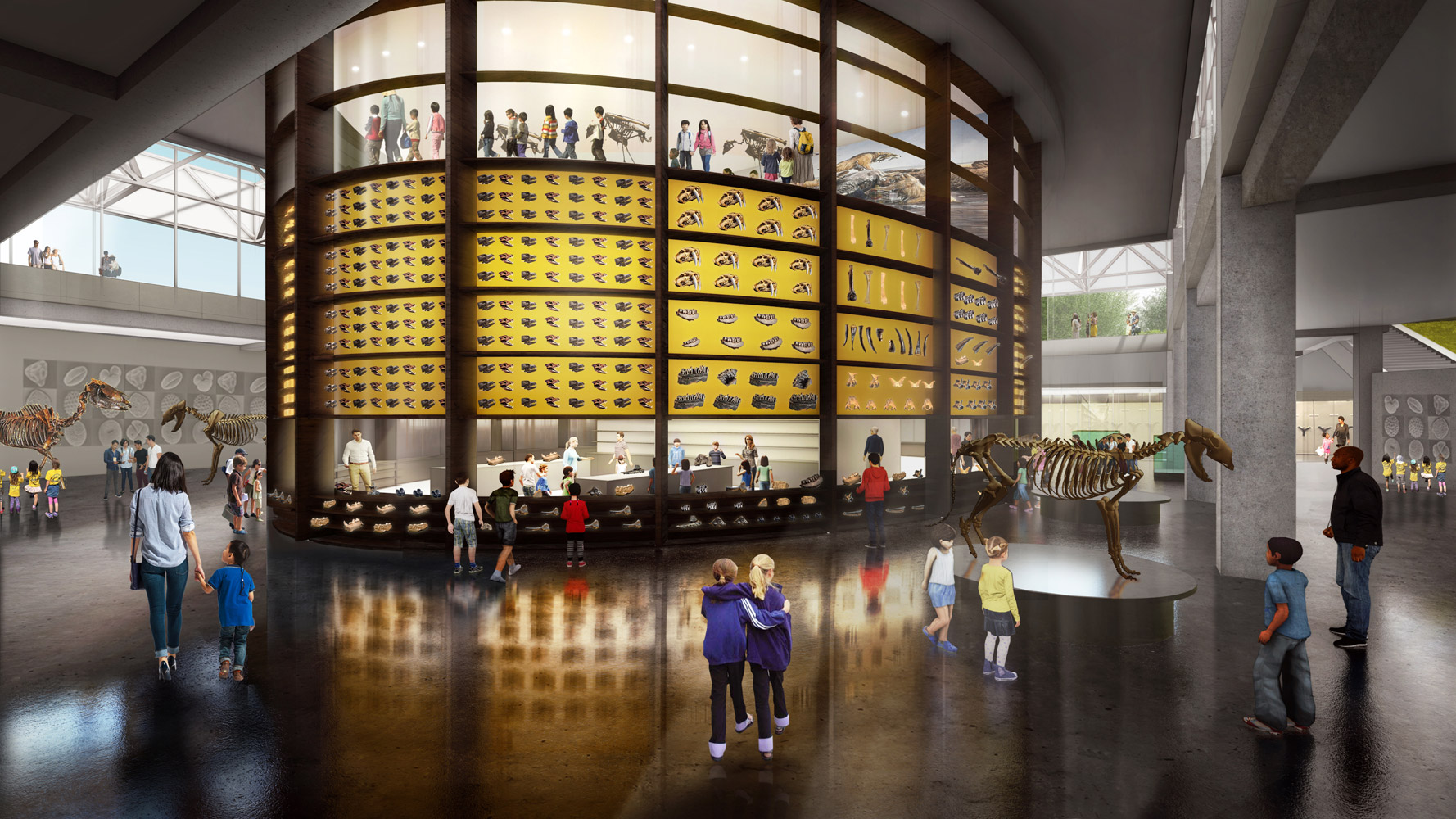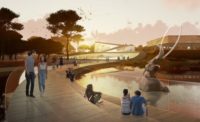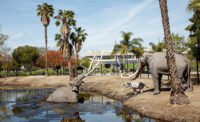Exhibition Designers Kossmanndejong Join Weiss/Manfredi for Overhaul of L.A.’s La Brea Tar Pits

Architects & Firms
Following recent news that Los Angeles-based Gruen Associates will join the Weiss/Manfredi-led design team tasked with reimagining L.A.’s famed La Brea Tar Pits in the role of executive architect, the Natural History Museums of Los Angeles County (NHMLAC) has now announced an exhibition designer for the ambitious project: award-winning Dutch firm Kossmanndejoing (KDJ).
The Amsterdam-based practice will lead the design of exhibition galleries and visitor experiences across the revamped 13-acre La Brea Tar Pits campus, including at the Page Museum. Named after entrepreneur and philanthropist George C. Page, the nearly five-decade-old museum facility would undergo an extensive redesign to include expanded and enhanced exhibition, research, and public programming space as a part of a larger site master plan envisioned by New York-based Weiss/Manfredi.
Located within Hancock Park in L.A.’s Miracle Mile adjacent to the Los Angeles County Museum of Art and the new Academy Museum of Motion Pictures, the La Brea Tar Pits—a U.S. National Natural Landmark since 1964—is a singularly Southern Californian attraction. While a serious paleontological research hub, the La Brea Tar Pits is also a tourist-friendly spectacle only fitting for its locale; the site’s statue of a doomed mammoth trapped in a bubbling asphalt pond abutting Wilshire Boulevard is an enduring L.A. icon.

Interior view of proposed new exhibition building at the Page Museum, including new galleries, film screening area, public programming space, and more. Image by Weiss/Manfredi, courtesy NHMLAC
The addition of Gruen Associates—and now KDJ—to the design team comes a little over three years after Weiss/Manfredi’s proposed master plan was selected by NHMLAC through a high-profile competition that included Diller Scofidio + Renfro and Dorte Mandrup as finalists. The selection of KDJ was a similarly rigorous one. The process included site visits and design charrettes with several leading international exhibition design teams, all vying to join the core team assembled to execute Weiss/Manfredi’s “Loops and Lenses” design concept.
A trio of KDJ clients—Amsterdam’s Museum of the Mind, the Naturalis Biodiversity Center in Leiden, the Netherlands, and Stapferhaus in Lenzburg, Switzerland—have won the coveted European Museum of the Year Award for the past three consecutive years. At the La Brea Tar Pits, KDJ’s “experience architects” will collaborate with the Weiss/Manfredi-led architectural and landscape design team along with NHMLAC researchers, curators, and exhibition teams.

A shaded outdoor classroom area at pit 91 would give visitors an intimate view of excavations underway. Image by Weiss/Manfredi, courtesy NHMLAC
“The Tar Pits is such a fascinating place for so many reasons, including being the only urban spot in the world where Ice Age fossils have been found and are still excavated,” said KDJ creative director and partner Niels de Jong in a press announcement. “We are thrilled to be part of a project where architecture, landscape, design, and programming are woven together into an integrated visitor experience.”
Anchored by a renovated and expanded Page Museum, Weiss/Manfredi’s master plan would unify the sprawling La Brea Tar Pits campus, including the tar pits, mammoth-trapping lake pit, and open green spaces. A 3,280-foot pedestrian circuit in the shape of a double-helix would fuse together existing core elements of the campus and newly created outdoor spaces dedicated to outdoor recreation and education.
With an executive architect and exhibition designer now selected, the project has reached what Weiss/Manfredi co-founders Marion Weiss and Michael Manfredi referred to in a statement as a “pivotal moment in the master planning process.” The schematic design will continue to be developed while the county prepares an Environmental Impact Report. The report will be available for public review and comment by this summer according to NHMLAC, which has stressed the “open and inclusive process” guiding the transformation of the La Brea Tar Pits.

A winding pedestrian path would connect all elements of the La Brea Tar pits campus at Hancock Park. Image by Weiss/Manfredi, courtesy NHMLAC
“We are excited to translate the very tactile magic of the Tar Pits, through architecture and landscape, into a place that captures the global imagination,” said Weiss and Manfredi.





